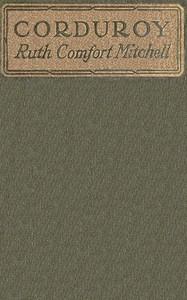|
|
Read this ebook for free! No credit card needed, absolutely nothing to pay.Words: 16016 in 5 pages
This is an ebook sharing website. You can read the uploaded ebooks for free here. No credit cards needed, nothing to pay. If you want to own a digital copy of the ebook, or want to read offline with your favorite ebook-reader, then you can choose to buy and download the ebook.

: Pottery decoration under the glaze by McLaughlin M Louise Mary Louise - Pottery; Glazing (Ceramics)@FreeBooksThu 08 Jun, 2023 ays, but ordinarily may be said to be about one-eighth. A piece of ware, therefore, made from clay which exhibits this degree of shrinkage, would be one-eighth smaller after firing than before. The shrinkage is also modified by the degree of heat to which the clay has been subjected in firing, and there will sometimes be a perceptible difference in the size of two pieces of ware, made from the same clay, and of equal size before firing, after having been fired at different temperatures. The length of time consumed in firing, varies with the qualities of the different wares. In the manufacture of white earthenware, the firing lasts from thirty to forty hours, while the more common kinds of ware require less time. In kilns of ordinary size, a thousand dozen pieces of ware are frequently fired at once. Of course, considerable time is required to place the seggars containing the ware in the kiln. Some hours must elapse before the kiln and its contents will become cool enough to permit its being opened with safety, so that the firing of hard-baked pottery may require two or three days for its completion. The first firing completed, the ware is said to be in the "biscuit," and is then ready to be glazed. This matter of glazing is a very important one, and the success of the whole very largely depends upon the manner in which the operation is performed. To insure a successful result there must be the nicest adaptation of the materials composing the glaze to the body of the ware. The glaze for each kind of ware must be suited to its especial characteristics, and it can therefore be imagined that the number of glazes in use is very large. Each pottery has its own glaze and the variety is infinite. The glaze used upon the finer kinds of earthenware consists of materials similar to those of which the body of the ware is made, with the addition of boracic acid , which with a little lead renders the glaze fusible. In the lower grades of ware a larger amount of lead is used for a flux, and this causes the glaze to fuse at the comparatively low temperature at which these wares are fired. A glaze made of materials that fuse at an unusually low temperature is called a "soft" glaze. Some glazes are so soft that, when fired, they can be easily scratched by the point of a steel instrument. The glaze of good and durable wares is, however, so hard, that the point of the sharpest knife will make no impression on its surface. The materials of which the glaze is made, are combined in the proper proportions and diluted to form a liquid of about the consistency and the appearance of cream. The piece of ware is then dipped carefully into the liquid, and so skillfully manipulated that it is completely covered with a coating of the glaze of the necessary thickness. After having been covered with the glaze, which, before firing, has the appearance of an opaque white paint, the ware is ready for the second firing. This is done in what is called the "gloss" kiln, in which the heat is not brought to such a high degree as in the biscuit kiln, but is sufficient to fuse the glaze, and cause it to form a glassy, transparent surface, which should completely cover the body of the ware, and present an equally brilliant appearance in every part. If the glaze is not suited to the body of the ware, and does not shrink equally with it, its surface will soon present a network of fine cracks. A glaze in this condition is said to be "crazed." This, among potters, is considered a serious fault, and in ware intended for cooking or table use, is certainly very undesirable. Old Japanese crackle-ware, in which this condition is a distinguishing feature, is, however, much esteemed, and many, indeed, the majority of the Japanese earthernwares, both ancient and modern, display a surface of fine-crackled glaze, which may not be said to detract from their value as articles of ornament. A similar effect is also seen in old pieces of glazed ware which have seen long service as cooking utensils, in which case it has been the natural result of the usage to which they have been subjected. In some modern wares, both French and English, decorated under the glaze, this defect is seen. In these cases it has been caused by the use of a softer glaze than the body of the ware demanded. This expedient has been resorted to in order that the brilliancy and beauty of the colors might be preserved. These articles being intended only for ornament, beauty is more of an object than durability, and this defect of glaze may be permissible as the means of obtaining more brilliant effects. In certain methods of decoration this may be a necessity, but these cases are exceptional and experience leads me to believe that it is possible to obtain beauty of coloring with a glaze which will remain intact. It is to be hoped, however, that with the improvements in making colors the time may come when it will be possible to obtain colors which will retain their beauty under the degree of heat necessary to the production of an article which a practical potter would call a perfect piece of ware. A certain delicacy of tint and firmness of outline characterizes overglaze painting, which is easily recognized by experts, but those who can not distinguish between the two methods by this means may ascertain to which class the decoration belongs by looking aslant the surface. The glaze upon the painted portions of a piece of ware decorated over the glaze, will not, even after the most perfect firing, equal the glaze upon the uncovered portions in brilliancy, and there will probably be certain inequalities of surface between the painted and unpainted parts which will be revealed to the touch. If the decoration has been executed under the glaze the surface will be uniformly covered with a brilliant glaze. Of the two, underglaze painting is probably the most difficult, as the colors are more liable to change under the action of the great heat to which the ware must be subjected, and the final results being, therefore, somewhat uncertain, can not be accurately counted upon, until experience has been gained from repeated failures. On the other hand, overglaze painting, while not subject to the changes produced by the fire, to so great an extent, is more difficult as regards the manipulation of the painting upon the glazed surface. The facilities for the practice of overglaze painting are greater than those afforded for painting under the glaze, which last, requires not only the handling of an artist who has acquired facile use of the brush and some experience of pottery clays and colors, but also the assistance of an intelligent and skillful potter. Free books android app tbrJar TBR JAR Read Free books online gutenberg More posts by @FreeBooks
: Mrs. Gurney's apology by Gurney Mary Jary - Women Social and moral questions; Desertion and non-support; Gurney Mary Jary 1829-1872; Gurney family@FreeBooksThu 08 Jun, 2023

: Inger Johanne's lively doings by Zwilgmeyer Dikken Young Florence Liley Illustrator Poulsson Emilie Translator - Girls Juvenile fiction; Norway Juvenile fiction@FreeBooksThu 08 Jun, 2023
|
Terms of Use Stock Market News! © gutenberg.org.in2025 All Rights reserved.






